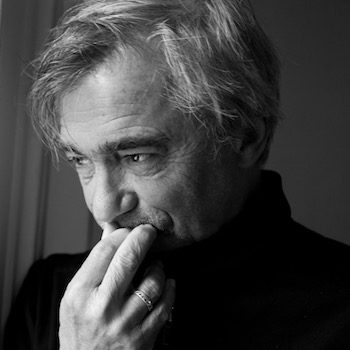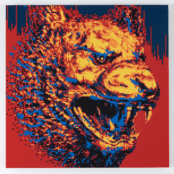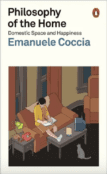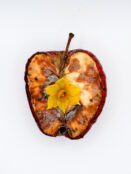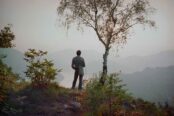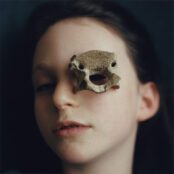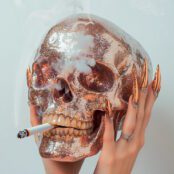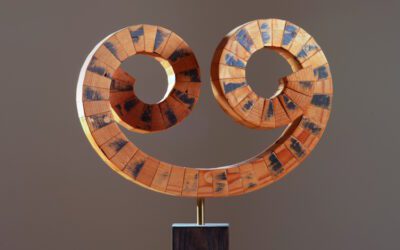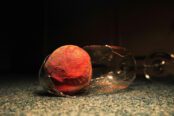Hailed as one of the world’s largest event of its kind, the London Gallery Weekend is impressive in the breadth and range of its participating galleries. Spread across different areas of the metropolis, the June event celebrated the city’s diverse cultural and creative communities, with an extensive programme including talks, family workshops and special displays. The organisers’ long-standing partnership with Art Fund allowed for curators from regional art institutions across the UK to visit participating galleries as part of their bursary scheme.
Given such a mammoth array of choice, it made sense to focus on just three galleries; two in Mayfair, featuring noted international artists, and one in deepest Deptford, showcasing the work of two emerging British practitioners.
Robert Rauschenberg at Thaddaeus Ropac, Mayfair
Over the course of his 60-year career, Robert Rauschenberg’s work was inspired by wide-ranging experiences, lifelong collaborations and a spirit of experimentation. Resisting identification with any specific movement, Rauschenberg was a forerunner of practically every post-war artistic development since Abstract Expressionism, and was awarded the Golden Lion at the Venice Biennale in 1964.
Between 1984 and 1991 he undertook a monumental cultural exchange programme designed to foster mutual understanding between different cultures through artistic expression. The Rauschenberg Overseas Culture Interchange (ROCI), spanned seven years of intense creative production. The Mayfair exhibition encompasses canvases, sculptures, cardboard works, neon light, photogravures and textiles, as well as an example of the artist’s earliest metal paintings. A selection of black-and-white photographs, taken as source material during his travels and used as silkscreen images are also included. Almost entirely funded by the artist, Rauschenberg’s team travelled from Mexico to Chile, to the Soviet Union, Japan and Malaysia among others, concluding in the U.S. with an exhibition at the National Gallery of Art in Washington, D.C.
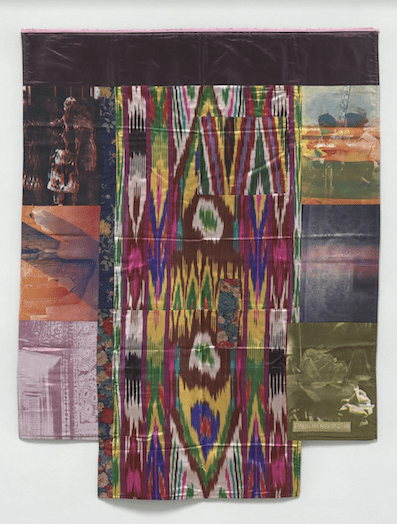
Working with a small team, Rauschenberg took a research trip to each participating country ahead of the corresponding leg of the exhibition, to visit sites of interest and meet with local artists, artisans and prominent cultural figures. He then returned to his studio in Captiva, Florida, where he translated his experiences into a new body of work, which was subsequently exhibited alongside the touring retrospective of the artist’s work and a selection of ROCI pieces from the previous countries. Each iteration of the exhibition consequently facilitated a dialogue between the participating countries through the works assembled, while simultaneously offering an overview of Rauschenberg’s practice to audiences who may have had little or no exposure to contemporary Western art.
In the course of his research trip to Chile, Rauschenberg began working with copper as a sign of solidarity with the Chilean people, fusing artistic innovation with his effort to reflect the socio-political conditions of the people he encountered, many of whom worked in terrible conditions in copper mines during the oppressive regime of dictator Augusto Pinochet in the 1980s.
Elsewhere in the exhibition, his expedition to Mexico resulted in ‘Night Post’, a wall filled with cardboard boxes unfolded and arranged in a modernist cubic formation, and his evocative ‘Samarkand Stitches’, inspired by his oriental journeys, made of sewn fabric collage with silkscreening.
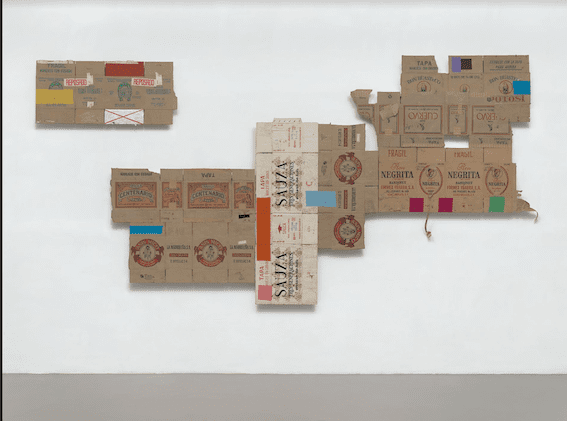
Presented in London at another moment of deep global uncertainty, this exhibition considers the power of international collaboration and cultural exchange in the 21st century.
“Art is educating, provocative, and enlightening even when first not understood. The very creative confusion stimulates curiosity and growth, leading to trust and tolerance. To share our intimate eccentricities proudly will bring us all closer.” — Robert Rauschenberg, 1984
Giulia Andreani at Max Heltzler
Just down the road in Dover Street is Max Hetzler, another well established Mayfair gallery, presenting a new body of paintings and works on paper by the noted Paris-based, Italian artist Giulia Andreani, encapsulating her compelling and haunting painterly practice.
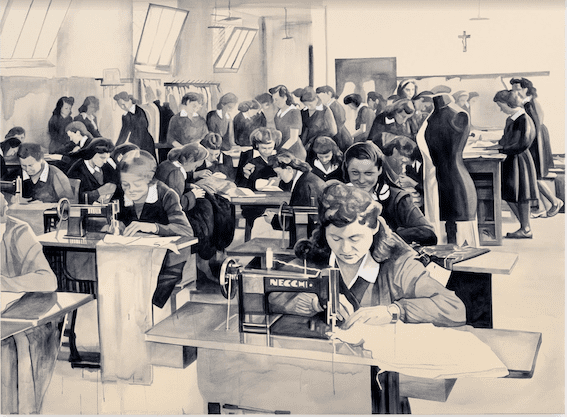
Across her oeuvre, Andreani repurposes personal memorabilia and archival photographs, addressing forgotten histories through a subversive and feminist lens. Working primarily in her signature palette of Payne’s grey – a blue-grey hue rich with echos of the past – her works unearth buried narratives to reconstruct timeless and prescient stories for the present moment.
Lending the exhibition its title, Andreani’s painting ‘L’improduttiva (The Unproductive One)’, shows a group of students entirely absorbed in their work as seamstresses. All but one, that is, who looks out towards the viewer defiantly, a mischievous smile flitting across her face.
The work is based on an archival photograph from the early 1940s which documents the tailoring school of Reggio Emilia. While women’s acceptance into the workforce during World War II marked a breakthrough moment of emancipation, it simultaneously highlighted the vast gulf of opportunity and liberty between the sexes. Capturing the viewer’s attention, the woman’s brazen smirk and gaze serve as a symbol of this inherent irony.
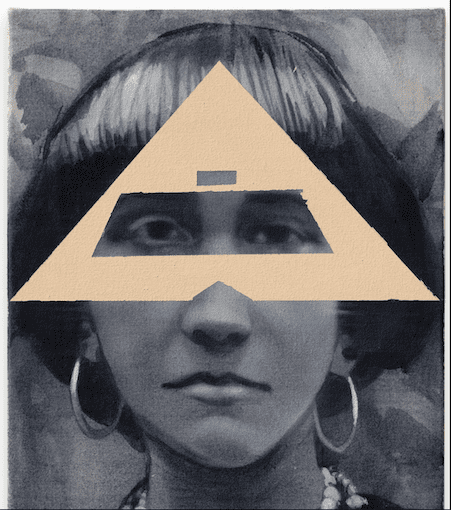
Giving voice to the voiceless of bygone eras, Andreani’s works are focused on anonymous subjects, particularly female ones, elevating the traditionally sidelined to historical status. The motif of the mask is also a recurring trope throughout her oeuvre, becoming representative of the performative roles enacted by women to survive in society, and the finest example is ‘The anarchic gypsy’, where, in masking her protagonist, Andreani in fact draws attention to her, endowing the subject with an unbreakable strength.
Holly Birtles and Charly Blackburn at Art in Perpetuity Trust
Leaving the West End bubble and crossing the river to south London brings us to the Art in Perpetuity Trust (A.P.T.), founded in 1995 by a group of artists in an old warehouse on Deptford Creek, which provides secure studios for visual artists, a contemporary art gallery, a working sculpture yard and an external public performance space. ‘Bog Bodies’, by photographer Holly Birtles and sculptor Charly Blackburn, interrogates the complexities of wetland mysteries in the Thames Estuary and the Fenland Marshes, exploring life, death, and metamorphosis through ceramics and photography.
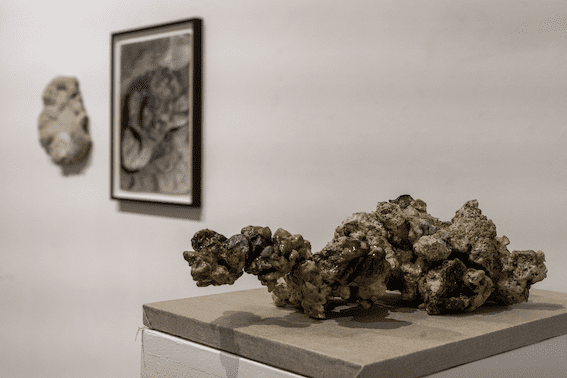
In the illustrated talk they gave, it was explained how the bog preserves the body in death, enabling us to travel back in time as far as the Mesolithic period through a dense soup inhabited by complex ecologies that thrive in the anaerobic surroundings, creating a biochemical and physical occurrence that facilitates the mummification of prehistoric humans.
These turgid, dark, fleshy wetlands present treacherous environmental conditions that reveal life and death. For artists Birtles and Blackburn, the bog body is symbolic – representing metamorphosis and degradation; the vital mud and turbid waters evoke an underworld hell that exposes seemingly paranormal curiosities. The exhibition interrogates and exposes the complexities of these mysterious spaces, figures, images and ideas.
Holly Birtles examines selected locations along the Essex side of the Thames Estuary as she envisions a musical production that articulates the sacred and tragic tales of the area, juxtaposed with associated ecological trauma, as depicted in her ‘Estuary Monster’. She draws on performance documentation, re-appropriation, AI-generated imagery, and self-portraiture to represent a collaborative response to selected estuary locations.
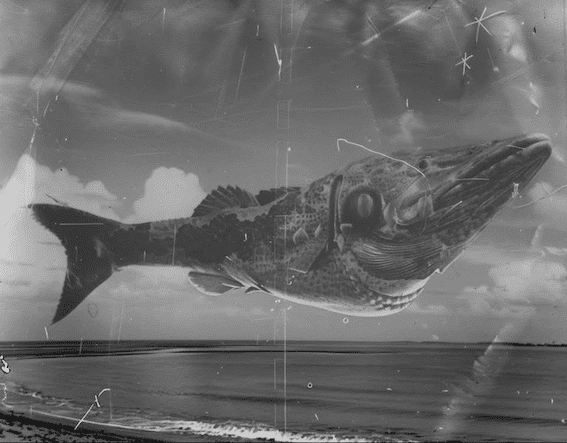
Charly Blackburn responds to the Fenland Marshes through clay vessels that embrace the debris and degradation of materials submerged and compressed in these wetlands. These forms appear as though they have been dredged up – teleported from deep mud to the studio, re-contacting ancient forms.
Together, Birtles and Blackburn each articulate the need to preserve these locations by engaging with folklore and supernatural tales as a means of reconnecting with ancient landscapes.

